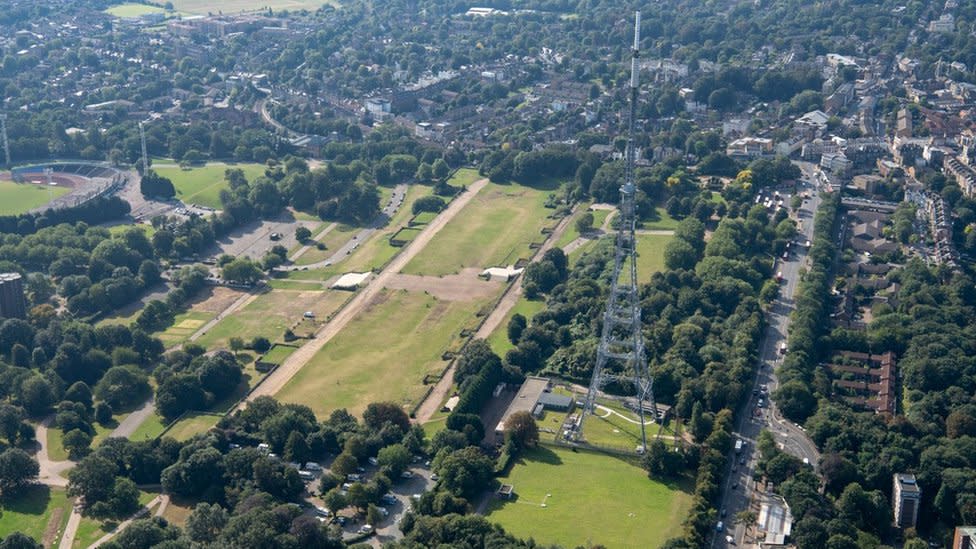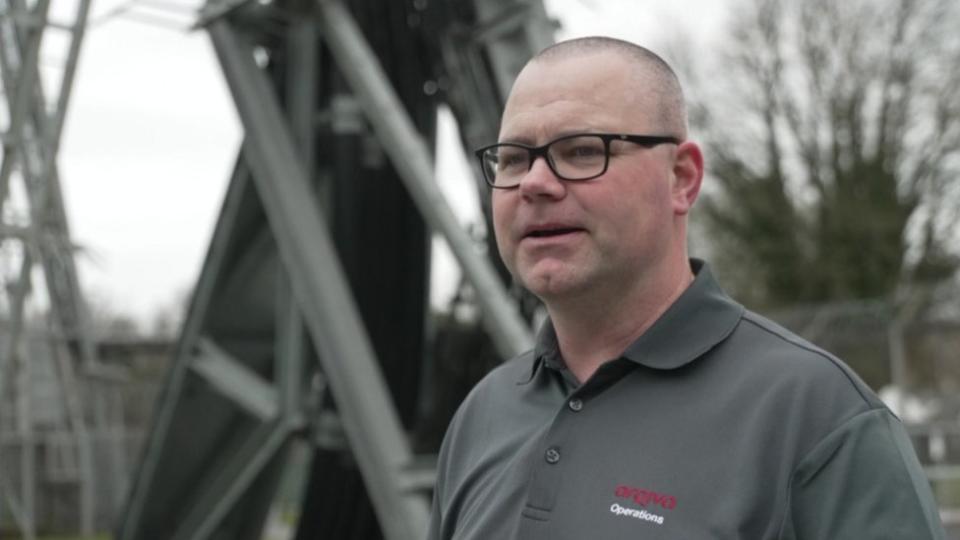Crystal Palace: The transmitter that beams TV to millions of homes

The Crystal Palace transmitting station is one of the tallest structures in London.
It has a unique job to beam terrestrial television into millions of homes in the capital and the Home Counties.
Its range extends as far north as Stevenage in Hertfordshire and as far south as Sussex.
Paul Mellers, who has been responsible for its maintenance for the past two years, describes himself as a "self-confessed transmitter geek".
He says he feels "privileged to work at the site because of its beauty and uniqueness as a structure, but also because of its history and importance to London".
Built in 1956, it replaced the transmitter at Alexandra Palace in north London. Its location was chosen because of its height above sea level.
However, moving to south London did not come without its problems.
The footprint of the site meant designers had to build a lattice-style tower which was tall and thin. Some people compare it to the Eiffel Tower in Paris because it has a similar design.
Mr Mellers says a lot of people locally consider it to be a "homing beacon" rather than an eyesore.

The tower itself has remained unchanged for almost 70 years, despite advances in technology.
When it first started transmitting, it was responsible for the output of the BBC only.
Two miles away, a rival transmitter was built two years before the one at Crystal Palace to broadcast ITV programmes.
But over the years, more and more channels started to use the Crystal Palace transmitter and in 1985 its neighbour stopped transmitting, meaning all television broadcasts came from Crystal Palace for the first time.
Today, rows and rows of hi-tech computers do much of the work underneath the tower in order to get the signal ready for transmission.
This was originally the role of an army of engineers who worked at the site around the clock.
From the introduction of colour TV to high definition and the digital switchover in the 2000s, the role of the transmitter has changed with the times, developing, adapting and modernising what it does.
In 2024, mobile phone masts also occupy the tower, which also broadcasts FM radio.
Changes to technology means fewer staff are needed, but for those who do work there - like Mr Mellers - there is nowhere else quite like it.
Listen to the best of BBC Radio London on Sounds and follow BBC London on Facebook, X and Instagram. Send your story ideas to hello.bbclondon@bbc.co.uk

